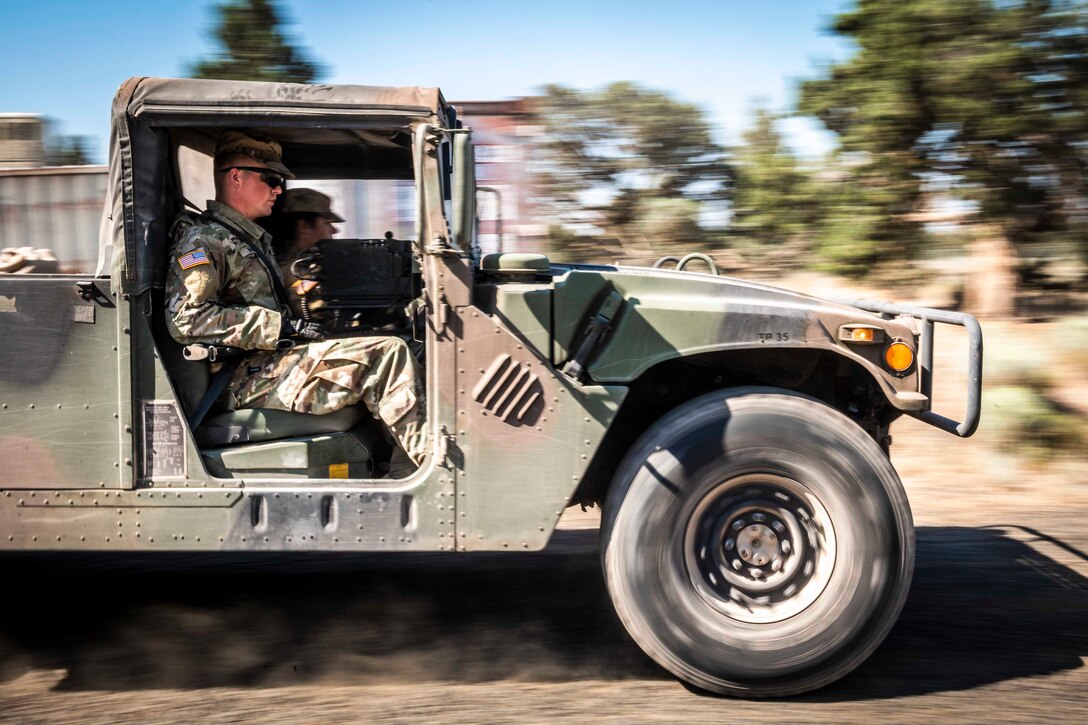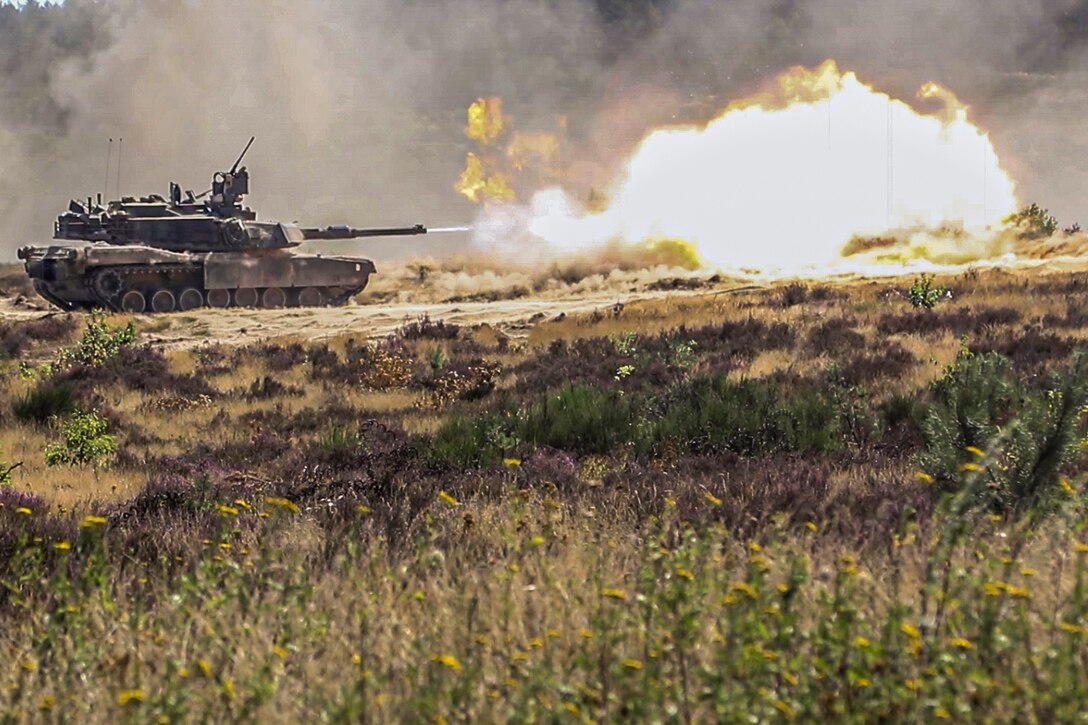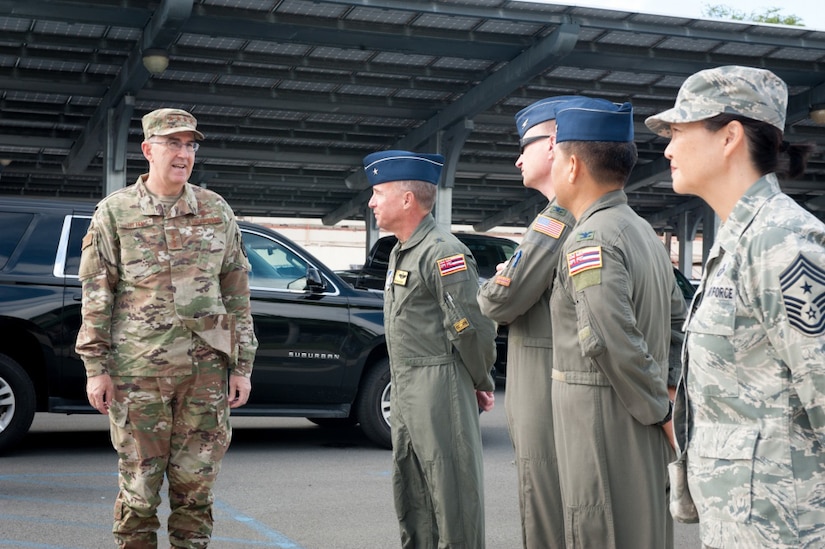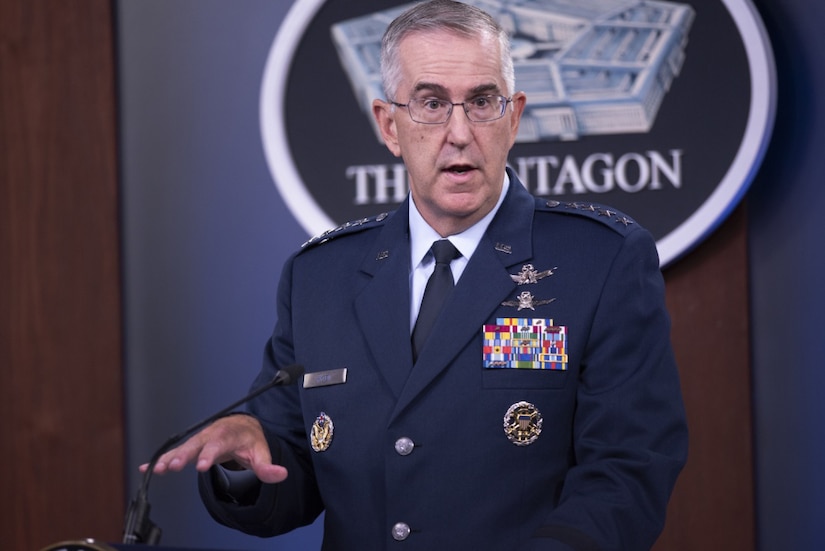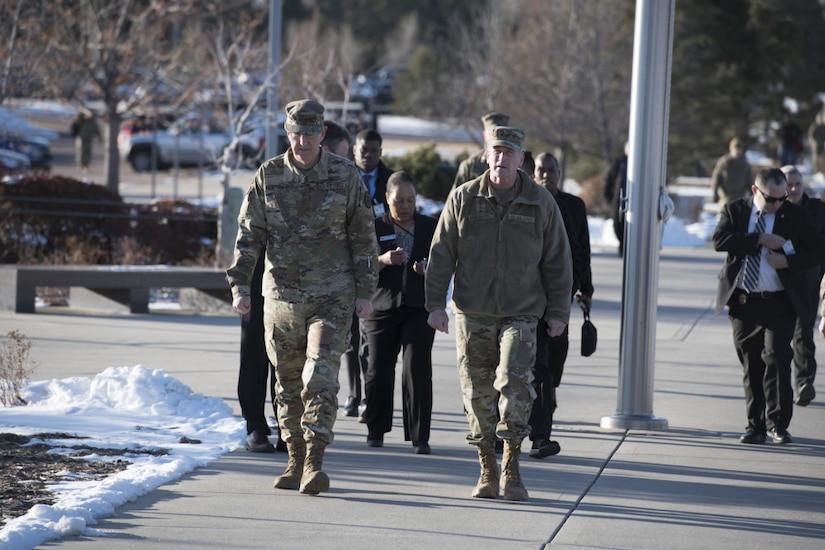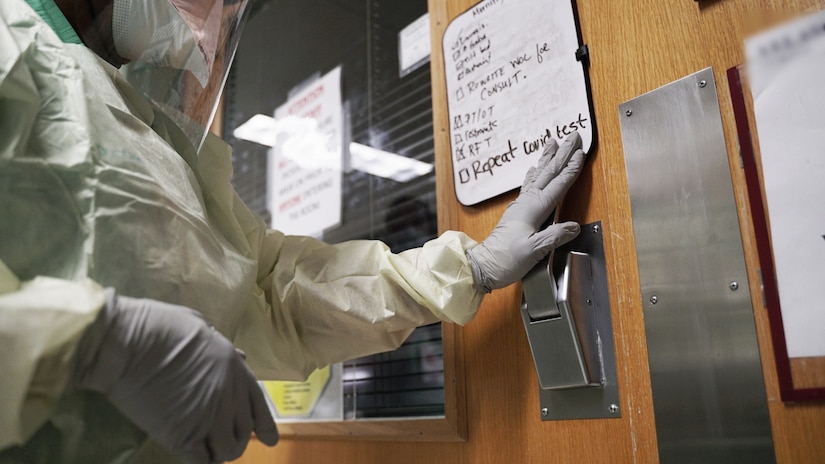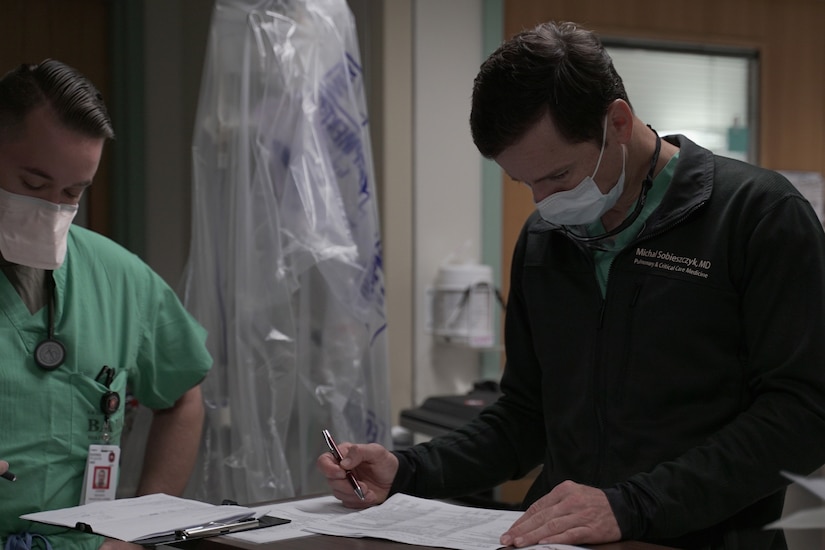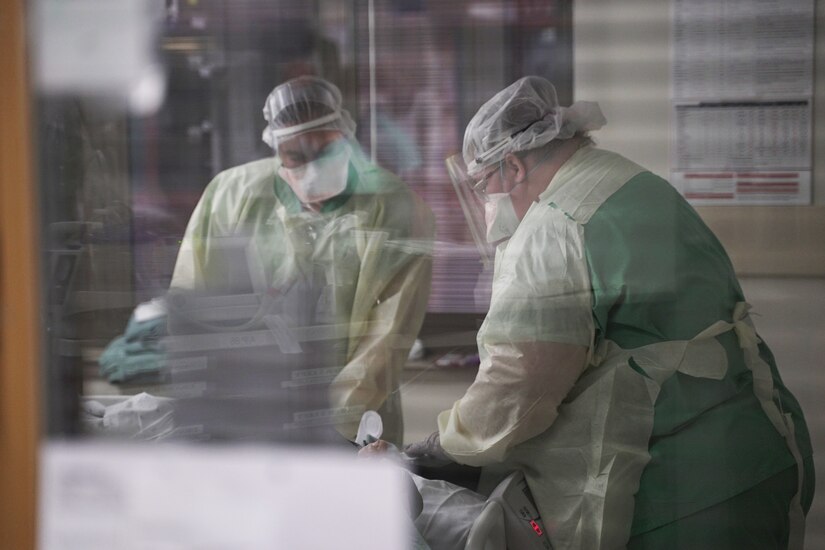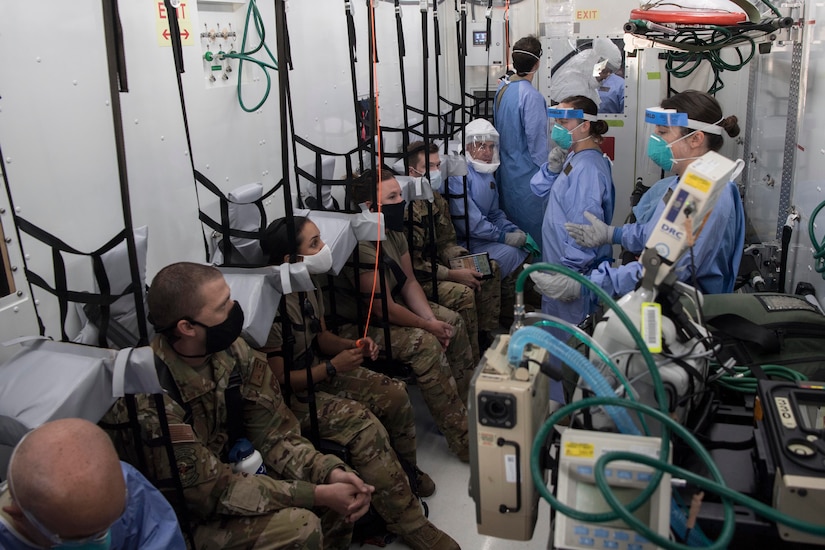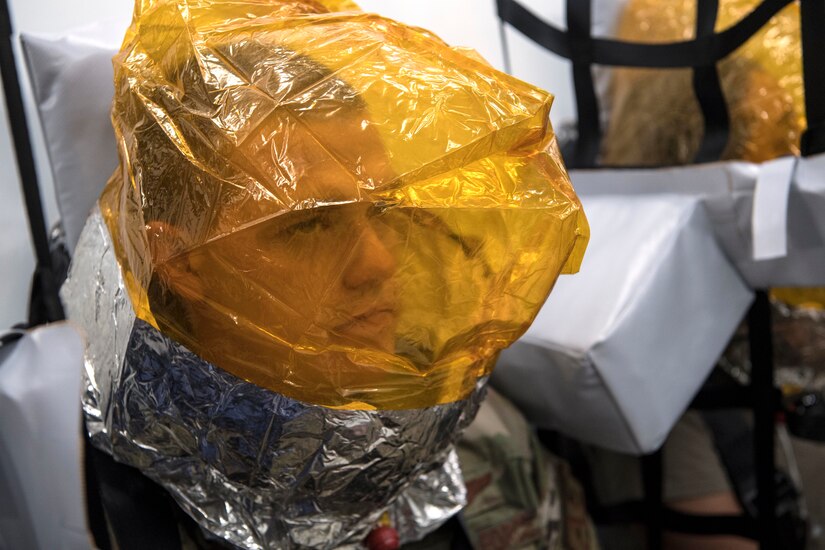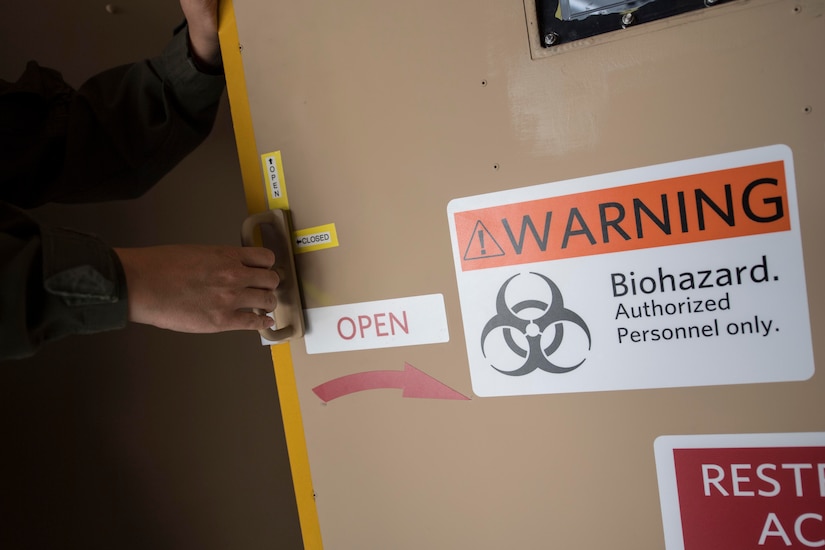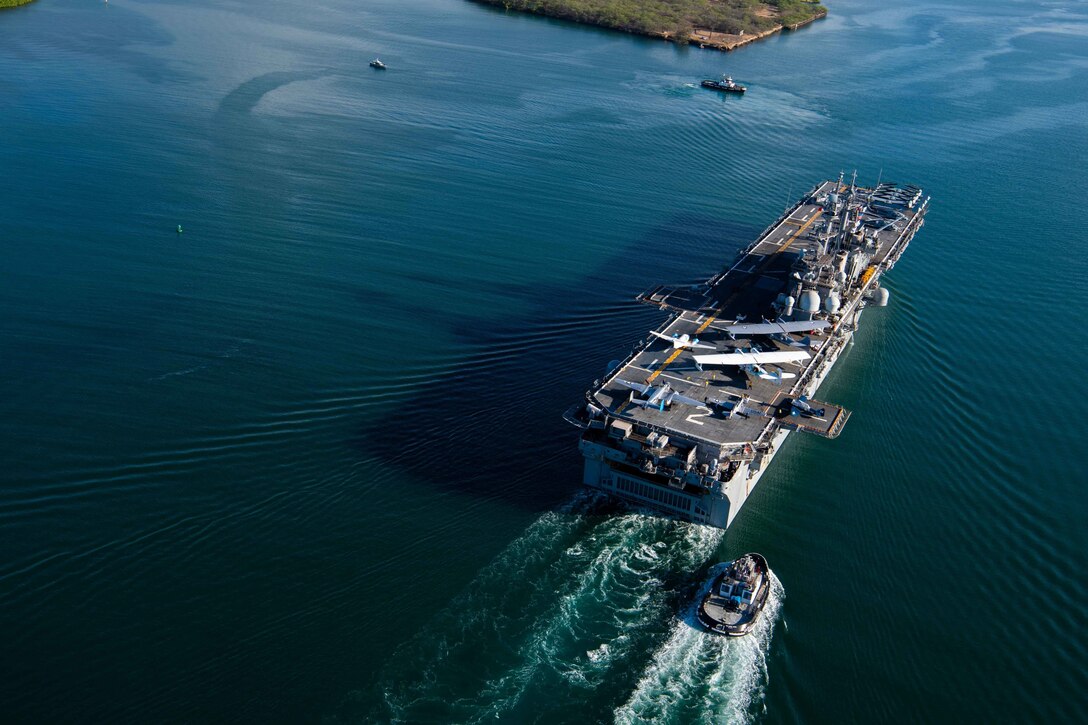Aug. 12, 2020
|
BY Elaine Sanchez
, Brooke Army Medical Center
Brooke Army Medical Center at Joint Base San Antonio-Fort Sam
Houston, Texas, is expanding its use of a highly specialized treatment
for critically ill COVID-19 patients.
Extracorporeal membrane oxygenation, or ECMO, is a heart-lung bypass
intervention that is proving to be lifesaving for some COVID-19
patients.
"ECMO is often the last line of defense for the most critically ill
patients with severe pulmonary disease," said Air Force Col. (Dr.)
Patrick Osborn, BAMC's deputy commander for surgical services. "Whether
due to COVID-19 or another condition, ECMO provides a life-support
option that can potentially save lives when all other options are
exhausted."
BAMC, one of the few local facilities that offer the treatment, is
providing up to one-third of the ECMO capability for the San Antonio
area's most severely ill residents, veterans and military beneficiaries
suffering from the virus.
"As much as able, BAMC is easing the burden on local health care resources by admitting civilian ECMO patients," Osborn said.
ECMO Explained
This treatment, which requires a multidisciplinary team of specially
trained medical personnel, is used in the intensive care unit when a
patient experiences heart or lung failure. The ECMO machine removes
blood from central vessels in a patient's body, circulates it through an
artificial lung, oxygenates it, and delivers the blood back into the
bloodstream. In essence, it replaces the natural functions of the heart
and lungs, allowing the treatments to help heal the affected organs..
"ECMO is not a treatment for any specific disease," said Air Force
Col. (Dr.) Phillip Mason, medical director for BAMC's adult ECMO
program. "It works by keeping critically ill patients alive and buying
time for us to address their underlying condition. In some cases, we can
reduce a patient's chance of dying from 80 to 90 percent down to 30 to
40 percent. While 30 to 40 percent is still high, it represents a
significant improvement and translates into many lives saved."
Established in October 2012, BAMC's adult ECMO center is the only one
in the Defense Department, and it remains one of the few centers with
global air transportable ECMO capability. The multiservice ECMO team has
traveled as far as Iraq and Afghanistan to pick up service members in
need of the treatment.
While taking care of military beneficiaries is BAMC's primary
mission, the organization is able to support civilian ECMO patients
through a special Defense Department program. The experience gained
ensures the ECMO team sustains the skills required to mobilize worldwide
to treat and transport patients back to BAMC, Osborn said.
COVID-19 Care
Due to the highly specialized personnel, training and equipment
required to care for ECMO patients, BAMC typically could treat only up
to four patients at any given time prior to the outbreak. In recent
weeks, the hospital has expanded its capability and is treating up to
nine patients at a time, most of whom are battling COVID-19.
An ECMO team carefully considers the treatment after other lifesaving
measures, such as oxygen therapy or a ventilator, have proven
ineffective.
"The vast majority of the critical care community believes that ECMO
is effective as a rescue therapy for respiratory failure that does not
respond to conventional therapies," Mason noted.
BAMC is also part of a multinational observational trial of ECMO's
use for COVID-19. The trial should help to reveal evidence-based proof
of the treatment’s effectiveness, but that's further down the line,
Mason said.
"While COVID is a complex disease affecting many organ systems, its
primary manifestation is respiratory failure, so there is at least some
reason to believe ECMO will be effective," he said, noting the treatment
is often used for other viral respiratory illnesses, such as influenza.
We have the highest highs and the lowest lows. But each life
saved is incredibly rewarding for us and a testament to the importance
of this treatment.''
Air Force Col. (Dr.) Phillip Mason, BAMC Adult ECMO Program
With the program in place for nearly a decade, BAMC's COVID-19 team
is accustomed to working closely with local hospitals in the event a
patient may be a candidate for ECMO. This collaboration has stepped up
in recent months, creating a larger influx of patients.
To expand capacity to meet the growing community need, BAMC called on
its ECMO team to train additional nurses and technicians on the
equipment, while also leaning on personnel from the U.S. Army Institute
of Surgical Research Burn Center, which is housed in the hospital, to
assist.
"With the support of the ISR we have been able to expand our ECMO
capacity significantly," said Army Maj. (Dr.) Michal Sobieszczyk, staff
physician, interventional pulmonology and critical care medicine. "The
BAMC and ISR bedside nurses have been instrumental in making the ECMO
mission a success."
Lifesaving Treatment
ECMO may be a last resort for COVID-19 patients, but one that has
proved lifesaving for many. Sobieszczyk recalled one recent patient in
his late 20s who was placed on ECMO twice — once for COVID-19 pneumonia,
from which he recovered, and the second time for a bacterial pneumonia
and sepsis.
"He required a high level of support and came close to dying several
times," Sobieszczyk said. "Fortunately, he was able to be weaned off
ECMO and his [breathing tubes were removed] earlier this week."
As a last-resort measure, ECMO is a high-stakes endeavor, Mason noted.
"We have the highest highs and the lowest lows," Mason said. "But
each life saved is incredibly rewarding for us and a testament to the
importance of this treatment."
ECMO is just one line of defense against COVID-19, but one that BAMC
is proud to offer to its beneficiaries and the community, Sobieszczyk
said.
"The ECMO team is honored to support the community during this
pandemic," he said. "Not only are we able to help the civilian
population, but at the same time use this as an opportunity to enhance
our mission readiness. It gives everyone a sense of purpose and mission,
something we all strive for in the military."
(Elaine Sanchez is assigned to Brooke Army Medical Center.)

